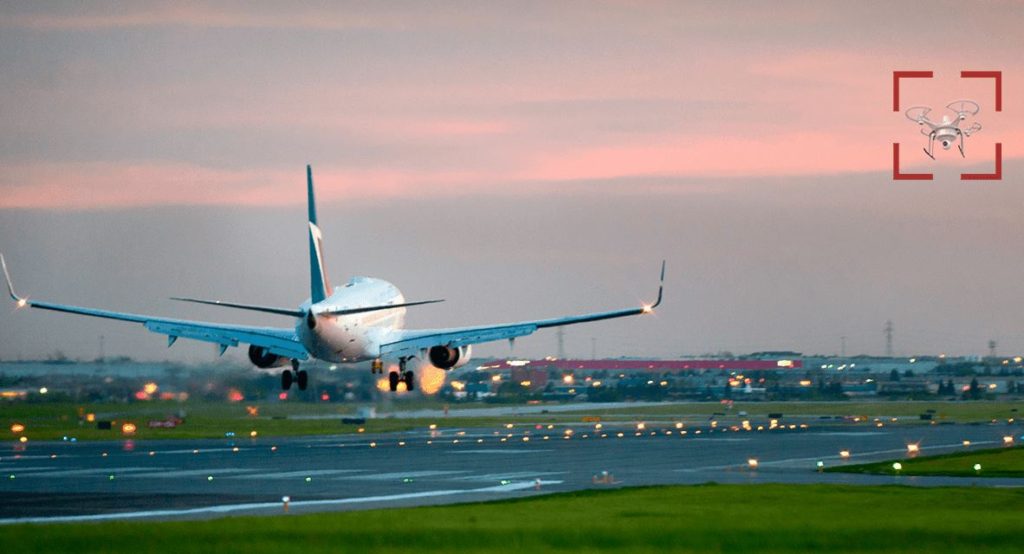As society moves to integrate drone use into the fabric of everyday life – delivery, agriculture, public-safety –the need to establish unmanned traffic management and “no-drone zones” will be a necessity, not a luxury.
To meet the challenge head-on, several players have emerged to help keep the airspace safe without stifling UAV sustainability.
Companies like Gryphon Sensors are leading the way in developing sensor systems that detect, track and identify small drones, ensuring that pilots keep their unmanned aircraft “between the lines” and away from unauthorized airspace.
DRONELIFE recently interviewed Craig Marcinkowski, Gryphon’s Director of Strategy and Business Development about the future of UAS sense-and-avoid technology.
A Community of Safety
When it comes to drone safety, Gryphon is building community among UAV companies, regulators, drone users and experts to create sustainable UAS policy, public perception and regulatory strategies to foster industry growth.
Gryphon co-founded the newly formed Commercial Drone Alliance — a “non-profit education and advocacy group founded earlier this year and led by key players in the industry.”
Marcinkowski, who serves as the Alliance’s secretary and treasurer, says the Alliance is moving ahead with several key projects.
“[The Alliance] was founded to help commercial drone end users find value in drone technology, and Gryphon Sensors is proud to serve in an executive position on the board of directors,” he said.
Keeping an Eye on Airports
Earlier this year, Gryphon spread its wings into the drone detection world even more, partnering with the FAA, Liteye Systems and Sensofusion in a Cooperative Research and Development Agreement .
The agreement will deploy drone-sensor prototypes at select airports and will work with other federal agencies – especially Homeland Security – to ensure the systems don’t interfere with normal aviation systems.
“We are demonstrating small UAS detection, tracking and identification in the critical airspace around airports where the consequences of an incursion are severe,” Marcinkowski said.
Gryphon is also providing radar surveillance data for the BNSF Pathfinder Program, an effort to promote safe aerial inspection of linear infrastructure such as rail and power lines.
The program is geared towards “beyond-visual-line-of-sight (BVLOS)” without “the use of multiple visual observers and without the need to take critical assets off-line during inspection.”
“Detecting non-cooperative air traffic at long ranges provides UAS pilots the data necessary to maintain a high level of safety for their mission and the surrounding airspace,” Marcinkowski said.
Drone detection is nothing new to Gryphon’s parent company, SRC, Inc. The company has been developing military counter-drone technology for more than a decade. Gryphon’s mission focuses on the commercial drone market to address the need for affordable sensor systems.
“The interest in drone security solutions has come from a wide range of industries—protection of intellectual property, critical infrastructure, large event venues (stadiums, theme parks), prisons, and the military,” Marcinkowski said.
He added that Gryphon offers two unique features with its counter-UAV products. The first is a “multi-spectral solution” – grabbing data from multiple sensors and drawing on the strengths of each one. Second, Marcinkowski says, Gryphon designs and builds sensors from the ground up specifically for the detection and tracking of small drones.
“We leverage six decades of radar and air surveillance expertise in the defense-sector from our parent company, and our understanding of the commercial market to provide affordable solutions that meet the unique requirements of the commercial customer,” he said.
Those unique requirements could prove lucrative for Gryphon and their competitors — a recent study predicts the emerging market will grow to a billion-dollar industry within six years with predicted compound annual growth rate of 23.89 percent across 2017-22.
“There are already large areas that are currently designated no-drone zones,” Marcinkowski said. “We can expect additional areas to ensure safety before wide-spread commercial use of drones could be deployed. However, there currently are and will continue to be plenty of areas where sUAS can be legally and safely flown.”
